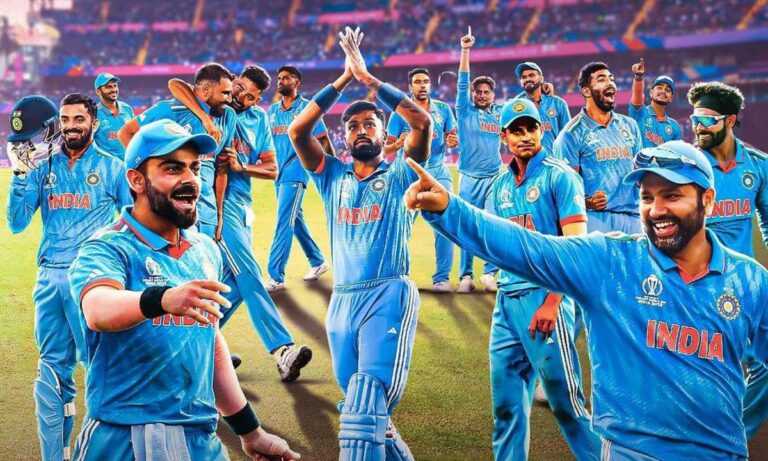How Cricket Teams Manage Player Health and Recovery
Online Cricket ID, 11xplay: Cricket, a sport that demands peak physical condition and mental resilience, places a significant emphasis on player health within teams. The rigors of the game require players to be in top form to deliver optimal performance on the field. A player in prime health not only enhances the team’s chances of success but also reduces the risk of injuries that could sideline key members.
In the fast-paced world of competitive cricket, player health is a non-negotiable aspect that teams cannot afford to overlook. Prioritizing the well-being and fitness of each player is crucial in ensuring sustained success and longevity in the sport. By investing in comprehensive health management strategies, teams can cultivate a culture of resilience and performance excellence that sets them apart on the global stage.
Preventative Measures for Player Injuries
Preventative measures play a pivotal role in ensuring the well-being of cricket players and minimizing the risk of injuries. One primary approach is the implementation of proper warm-up and cool-down routines before and after training sessions and matches. These routines prepare the body for physical exertion, reducing the likelihood of strain or sprains during gameplay.
In addition to warm-up exercises, coaches and physiotherapists emphasize the importance of strength and conditioning programs tailored to the specific needs of cricket players. Developing muscle strength and endurance not only enhances performance but also provides a layer of protection against injuries sustained on the field. By incorporating strength training into their regular regimen, players can build resilience and stability, guarding against common cricket-related injuries.
Rehabilitation Strategies for Injured Players
Rehabilitation strategies play a crucial role in getting injured cricket players back to full fitness and performance level. These strategies often involve a combination of targeted exercises, physiotherapy sessions, and closely monitored recovery plans. Each player’s rehabilitation program is tailored to their specific injury, taking into account factors like the extent of the injury, their fitness level, and overall health.
The goal of rehabilitation is not only to heal the injury but also to prevent future recurrences and enhance the player’s overall strength and flexibility. It is essential for injured players to adhere diligently to their rehabilitation programs, following the guidance of medical professionals and physiotherapists. By embracing the rehabilitation process wholeheartedly, players can expedite their recovery timeline and return to the field with confidence in their physical abilities.
Nutritional Guidelines for Optimal Performance
Optimal performance on the cricket field requires a well-balanced and nutritious diet to fuel the player’s energy levels and support overall health. A diet rich in carbohydrates, proteins, healthy fats, vitamins, and minerals is essential for sustained energy throughout training sessions and matches. Carbohydrates are the primary source of fuel for cricket players, providing the energy needed for quick bursts of speed, power, and agility during the game.
Protein is crucial for muscle repair and growth, which is especially important for cricket players who undergo rigorous training regimes. Lean sources of protein such as chicken, fish, eggs, and legumes should be included in every meal to support muscle recovery and development. Additionally, hydration plays a vital role in performance, and players should aim to drink plenty of water throughout the day to stay properly hydrated and maintain optimal performance levels on the field.
The Role of Physiotherapists in Player Recovery
Physiotherapists play a crucial role in the recovery process of cricket players. They are trained professionals who specialize in assessing, diagnosing, and treating musculoskeletal injuries. Through hands-on techniques and targeted exercises, physiotherapists help players regain strength, flexibility, and mobility to get back to peak performance on the field.
Additionally, physiotherapists work closely with other members of the medical team, coaches, and trainers to develop customized rehabilitation programs for each player. By providing individualized care and monitoring progress, they ensure that players can safely return to play without risking further injury. Their expertise and guidance are essential in helping players recover effectively and maintain long-term health and well-being in the fast-paced world of cricket.
Mental Health Support for Cricket Players
Cricket players undergo immense pressure, both from within and from external expectations. The demands of the sport can take a toll on their mental well-being. It’s crucial for teams to provide a supportive environment where players feel comfortable seeking help and guidance when needed. Communication channels should be open between the players and the team’s mental health professionals to address any concerns promptly.
Self-care practices, such as mindfulness and stress management techniques, can be incorporated into the players’ routine to promote mental resilience. Engaging in activities outside of cricket, spending time with loved ones, and maintaining a healthy work-life balance are essential for overall mental health. By fostering a culture that prioritizes mental well-being, cricket teams can empower their players to perform at their best both on and off the field.
Monitoring and Tracking Player Fitness Levels
Monitoring and tracking player fitness levels is a crucial aspect of ensuring that cricket teams perform at their best. By consistently evaluating the physical condition of players, coaches and medical staff can identify any potential issues early on and adjust training regimes accordingly. This proactive approach not only helps in preventing injuries but also allows for targeted interventions to enhance overall player performance.
Implementing a comprehensive system for monitoring and tracking player fitness levels involves assessing various factors such as strength, flexibility, endurance, and agility. Regular fitness tests and assessments provide valuable data that can be used to tailor individualized training programs, address weaknesses, and capitalize on strengths. Additionally, tracking fitness levels over time enables teams to track progress, set benchmarks, and make informed decisions to optimize the health and performance of their players.
Utilizing Technology for Injury Prevention
Technology has become a valuable tool in preventing injuries among cricket players. Advanced motion analysis systems allow coaches and physiotherapists to closely monitor players’ movements and identify any potential biomechanical issues that could lead to injuries. By analyzing data such as running gait, bowling technique, and body mechanics, teams can proactively address any underlying issues before they escalate into more serious injuries.
Another way technology is being utilized for injury prevention is through wearable devices that track players’ workload and physical exertion during training and matches. These devices provide real-time data on factors such as heart rate, distance covered, and sprint speeds, allowing coaches to tailor training programs to individual players’ needs and ensure they are not at risk of overtraining or burnout. By utilizing technology in these ways, cricket teams can better protect their players from injuries and optimize their performance on the field.
Balancing Rest and Training for Player Recovery
Rest and training are crucial components in the recovery process of cricket players. While intense training is necessary to maintain peak performance, adequate rest is equally important to allow the body to repair and regenerate. Finding the right balance between rest and training can be challenging, but it is essential in ensuring players can perform at their best without risking injury and burnout.
Coaches and support staff play a vital role in monitoring players’ workload and recovery to strike the perfect balance between rest and training. Periodization of training programs, incorporating sufficient rest days, and adjusting training intensity based on individual player needs are all key strategies in managing player health and optimizing performance. By prioritizing rest alongside rigorous training routines, cricket teams can better support their players’ long-term physical and mental well-being.
Team Collaboration in Managing Player Health and Recovery
Ensuring optimal player health and recovery in cricket teams requires seamless collaboration among various team members. Coaches, physiotherapists, strength and conditioning coaches, nutritionists, and sports psychologists must work together cohesively to create a comprehensive plan that addresses the physical, mental, and emotional well-being of the players. By sharing information, insights, and expertise, each team member contributes to the overall success of the players’ health and recovery strategies.
Team collaboration also involves open communication and transparency regarding players’ progress, setbacks, and needs. Regular meetings and discussions among team members help identify any issues or concerns promptly, allowing for quick adjustments to the health and recovery plans as needed. Additionally, by fostering a culture of teamwork and mutual support, cricket teams can create a positive and empowering environment that promotes player well-being and enhances their overall performance on and off the field.







